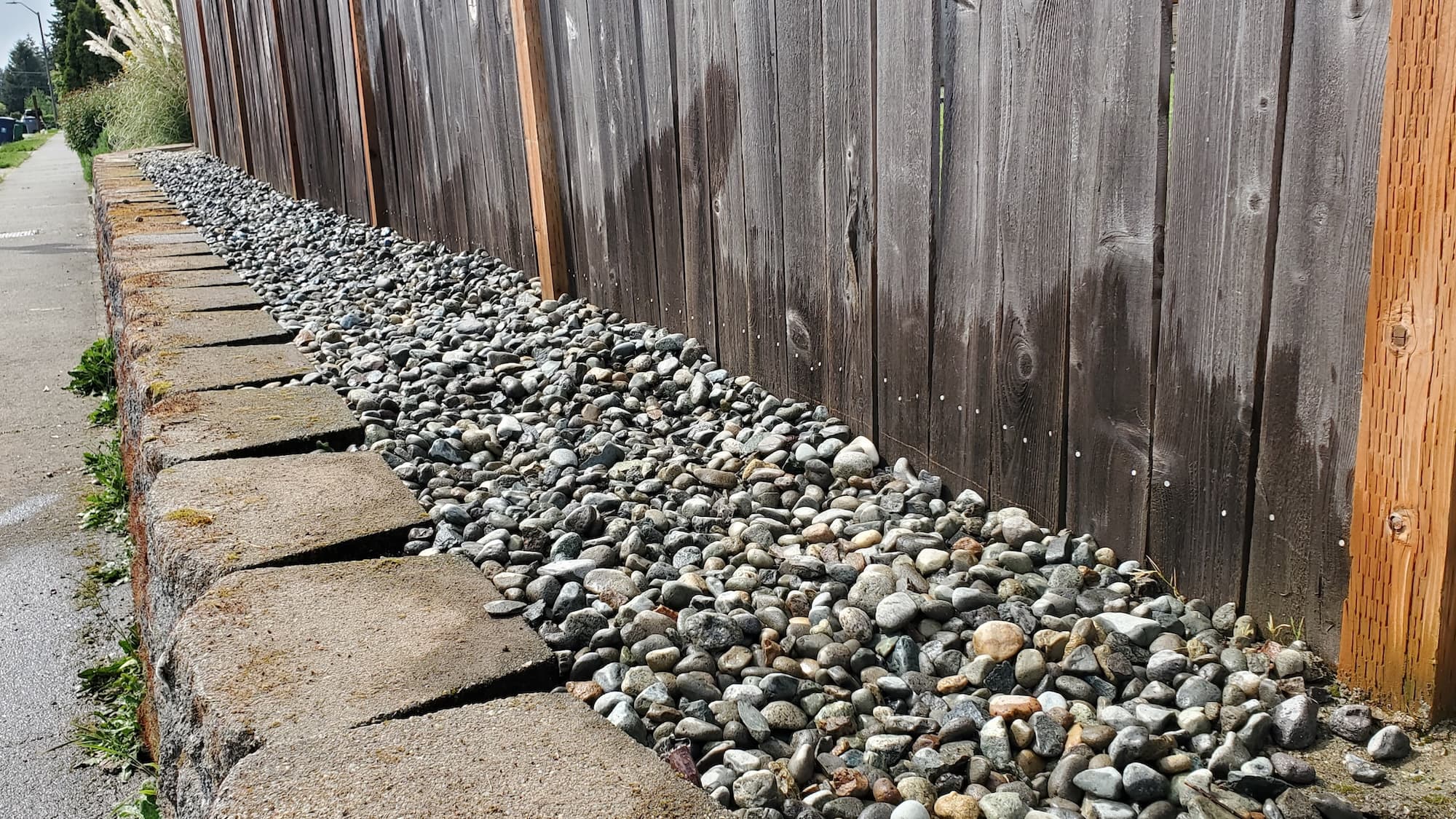Gravel Path Repair & Refresh
Homeowner’s Issue
Gravel yards in Gravel face a familiar set of Pacific Northwest challenges: heavy seasonal rain, compacted glacial soils, persistent moss, and fast-moving runoff on even modest slopes. Many homes here sit on glacial till with a thin topsoil layer, which reduces infiltration and encourages pooling along paths and drive edges. Combined with low sun in winter and spring, weeds, moss, and displaced gravel make paths uneven and slippery. Curb appeal suffers when gravel migrates into beds or sidewalks, and homeowners often worry about trip hazards and muddy boots.
Typical local needs include improving drainage on slopes, re-establishing clean edges to protect planting beds, and choosing gravel sizes that shed water without washing out. Homeowners around White Center and the nearby Highline corridor ask for low-maintenance solutions that respect stormwater, avoid herbicides, and stay tidy through our long, wet season. Our work aims to keep paths safe, stable, and attractive with sustainable practices that suit Gravel’s climate and soil conditions.
Our Quality Service
We inspect for erosion patterns, drainage flow, and compaction, then recommend fixes that work with local rainfall rather than against it. Work includes hand and mechanical removal of invasive weeds, adding or regrading base materials, and installing edging to retain stone on slopes. We favor geotextile fabric, recycled or locally sourced gravel, and organic weed control methods — no herbicides.
Benefits you’ll notice:
- Better drainage on rainy days and less washout on slopes.
- Safer, more even walkways for family and guests.
- Lasting curb appeal with lower maintenance needs between visits.
What’s Included
- Site assessment and grading check
- Hand weeding and organic weed control
- Gravel replenishment and compaction
- Edging repair or new edge installation
- Cleanup and haul-away of debris
Options / upgrades:
- Geotextile fabric for extra weed prevention
- Decorative or larger aggregate for better drainability
- Organic compost top-dressing on adjacent beds
- Haul-away vs. green bin disposal
Before & After / Expectations
Expect some noise from raking and compacting equipment and a day of activity for most projects. We’ll protect access routes and work to minimize mud tracking into homes. After cleanup, paths will look level, edged, and compacted; you may notice surface settling over the first few weeks—this is normal and we’ll top up as needed.
Care tips for Gravel yards:
- Lightly rake and top up thin spots each spring.
- Pull weeds by hand when small; avoid herbicides.
- Add coarse stone on steep sections to reduce washout.
- Maintain clear edges to prevent migration into beds.
FAQs
How long will a repair take?
Most residential paths are completed in one day; larger or slope-heavy jobs may require two days.Will you use herbicides?
No. We use sustainable, non-chemical methods only — hand removal, fabric, and organic approaches.Do you handle drainage fixes?
Yes. We evaluate slope runoff and can add grading, sub-base, or edge drains as needed.Is access required?
We need clear access for wheelbarrows or small equipment and a short water/compost hose if needed.
Call to Action
Gravel homeowners: ready for safer, low-maintenance paths that suit our wet climate? Book a free estimate with local crews who know Gravel and nearby White Center and Highline. Fast scheduling, reliable results, and sustainable methods.
Email: neatandtidyseattle@gmail.com










